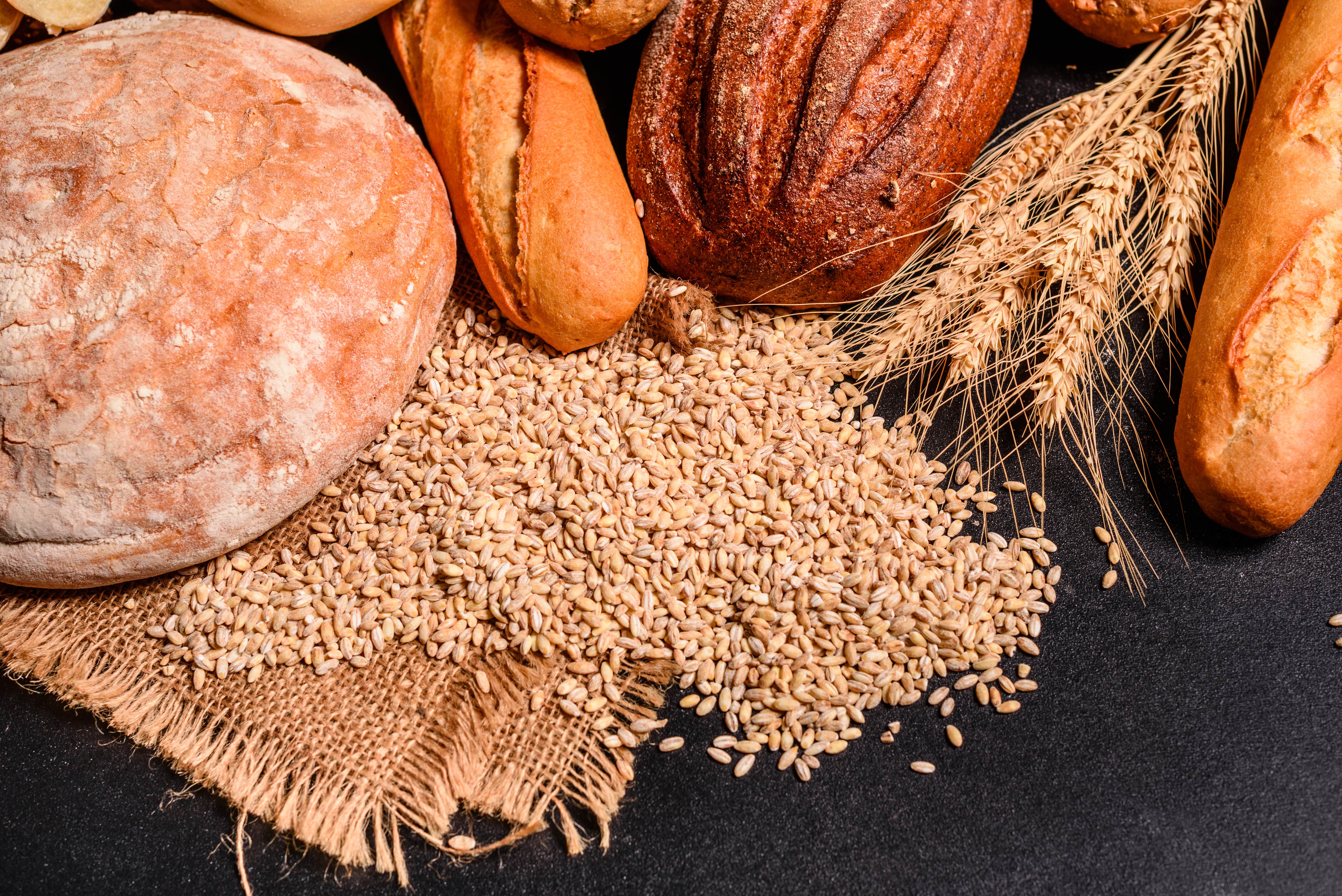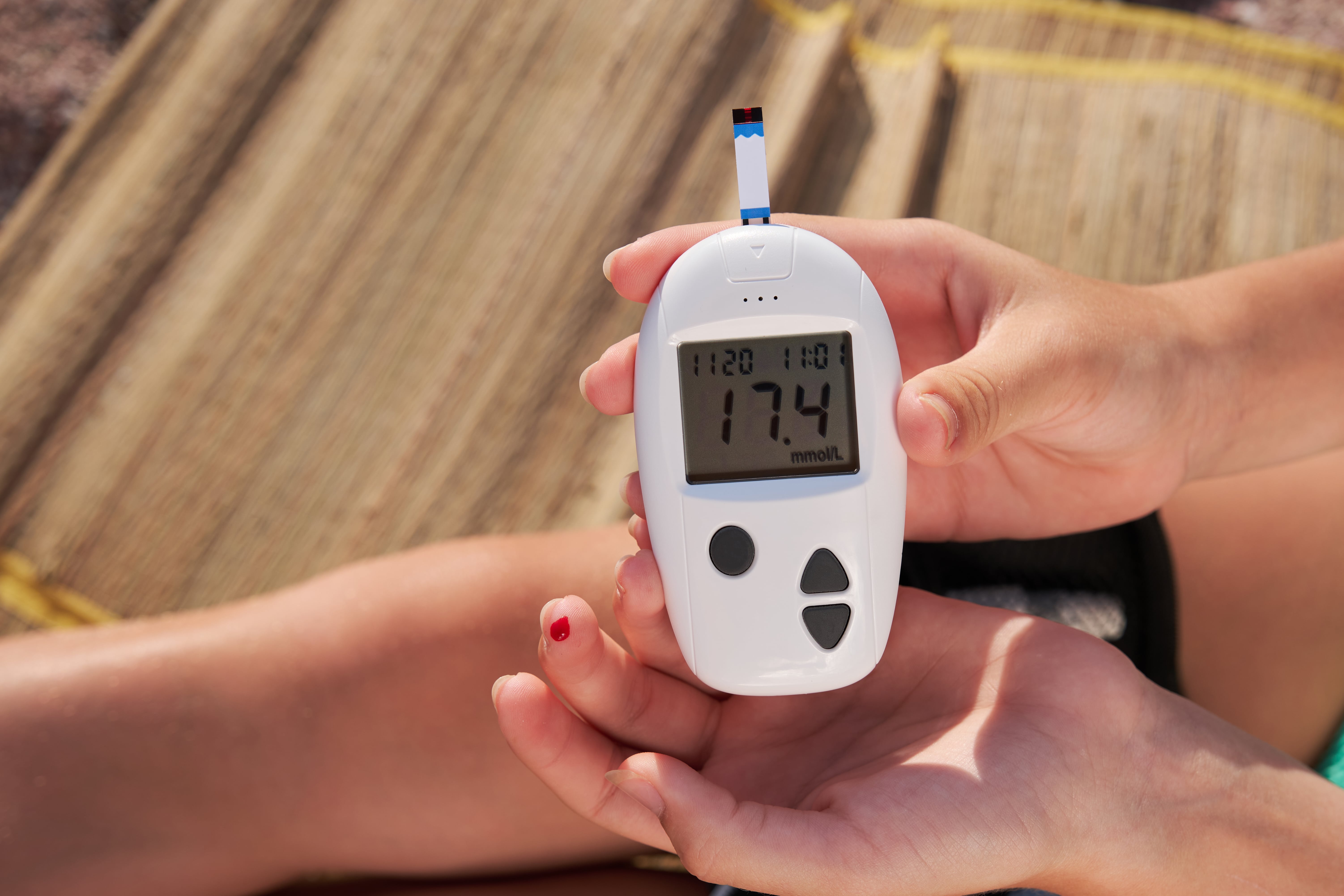Glucose is the body’s primary source of energy. It fuels everything from your brain to your muscles, keeping your body functioning throughout the day. Maintaining stable glucose levels is critical, not just for energy, but also for preventing long-term health issues.
When glucose regulation is impaired, whether due to genetic factors, lifestyle choices, or other causes, it can increase the risk of health conditions such as insulin resistance, diabetes, and even heart disease. Understanding how your body regulates glucose levels can help you take control of your health and reduce these risks.
This article will explain what glucose is, how it’s managed, what happens when levels are out of balance, and offer practical tips for keeping your glucose steady and healthy.
The Science of Glucose Metabolism
Glucose is a simple sugar, or monosaccharide, that serves as the body’s primary energy source. It’s found in various foods, especially carbohydrates, and is essential for powering nearly every function in your body. Once glucose enters your bloodstream, your body relies on hormones like insulin to help move it into cells, where it can be used for energy.
Inside each cell, glucose is broken down through a process called glycolysis, which leads to the production of ATP (adenosine triphosphate). ATP acts as the body’s energy currency, fueling everything from physical movement to cellular repair and brain activity.
Without glucose, your body wouldn’t have the energy it needs to function properly.
Why Your Body Needs Glucose
Glucose is essential for your brain and muscles. The brain uses glucose as its primary fuel source to regulate basic functions such as thinking, memory, and coordination.
Your muscles also depend on glucose to maintain strength and stamina during physical activity. Every system in your body, from your heart to your kidneys, relies on glucose for energy, so the body works hard to regulate levels in your blood. When this system breaks down, and there’s too much or too little glucose in the blood instead of in your cells, it increases your risk for metabolic health problems.
Sources of Glucose

Carbohydrates are the primary dietary source of glucose, and they can be divided into two main categories:
- Simple Carbohydrates: These break down quickly in the body, leading to a rapid rise in glucose. They include sugar, soda, and candy. While they provide a quick burst of energy, frequent consumption can lead to glucose spikes that deplete energy and increase cravings.
- Complex Carbohydrates: Found in foods like whole grains, beans, and legumes, these take longer to break down, providing a slower, more consistent release of glucose. They also tend to be higher in fiber, a key nutrient that slows glucose absorption and helps keep glucose levels stable.1
Internal Glucose Production
When food sources are unavailable, your body can produce glucose on its own as part of the system that ensures a constant energy supply for your cells. There are two key processes behind this:
- Glycogenolysis: The body stores extra glucose as glycogen, primarily in the liver. During periods of fasting, exercise, or when glucose levels drop, glycogen is broken down into glucose and released into the bloodstream for energy.
- Gluconeogenesis: This process allows the body to create glucose from non-carbohydrate sources, such as proteins and fats. It typically kicks in during extended fasting or low-carbohydrate diets, ensuring that the brain and other critical organs have enough fuel to function.1
How Your Body Regulates Glucose
Your body has a finely tuned system to maintain balanced glucose levels. In the body, homeostasis refers to a state of balance or equilibrium. Glucose homeostasis refers to the body's ability to regulate glucose levels within a balanced, healthy range, thereby preventing levels from becoming too low or too high.
Hormones involved in glucose regulation include:1
- Insulin: When glucose levels rise after a meal, the pancreas releases insulin, a hormone that helps glucose move from the blood into your cells. Once inside, glucose can either be used immediately for energy or stored for later use.
- Glucagon: When glucose drops too low, such as during fasting or between meals, the pancreas releases glucagon. This hormone signals the liver to break down stored glycogen into glucose, which is then released back into the bloodstream to restore balance.
- Other Hormones: Cortisol, known as the stress hormone, can also impact glucose. Cortisol ensures there is enough glucose available for energy by stimulating glucose production in the liver.
This hormone-driven system constantly works to maintain your glucose within a healthy range, adjusting to your activities and meals throughout the day.
What are Healthy Glucose Levels?
Normal levels vary depending on the time of day and your recent food intake:
- Fasting Blood Glucose: After at least 8 hours without eating, a healthy range is usually 70-99 mg/dL.
- Postprandial Blood Glucose (after a meal): Healthy levels should typically be under 140 mg/dL about two hours after eating.
Another important factor to consider is glycemic variability, which refers to the swings in glucose levels throughout the day. However, studies have shown that excessive fluctuations in glucose levels can increase inflammation and oxidative stress and increase the risk of developing metabolic disorders, cardiovascular disease, and even cognitive decline.
It's also worth considering that there is a difference between "normal" and "optimal" glucose levels. Optimal levels are slightly lower, and some healthcare professionals suggest that fasting glucose levels should be between 70 and 90 mg/dL, as someone with a fasting glucose of 99 is very close to the threshold for prediabetes.
How to Measure Glucose Levels?

Tools are available to help you measure and monitor your glucose levels. Here’s a breakdown of the most common methods:
- Fasting Glucose Test: Often conducted during a routine physical, this test measures your glucose levels after you’ve fasted overnight (about 8 hours). It provides insight into how your body maintains glucose levels at rest and can help identify issues like prediabetes or diabetes. Fasting levels between 100 and 125 are considered prediabetes, and any higher than 125 mg/dL indicates diabetes.
- Hemoglobin A1c: This blood test gives a broader view of your glucose control by measuring the average glucose levels over the past 2-3 months. It’s used for diagnosing diabetes and monitoring how well your condition is managed over time. Normal is anything under 5.7% (although some experts believe optimal levels are 5.4% and below). Levels above 6.5% are considered diabetes, and prediabetes is 5.7 to 6.4%.
- Fingerprick Blood Glucose: A quick and simple method done at home using a glucose meter. By pricking your finger with a small lancet, you can test a drop of blood to get an immediate reading of your glucose level.
- Continuous Glucose Monitors (CGMs): These wearable devices provide real-time data on your glucose levels. A small sensor placed under the skin tracks fluctuations throughout the day and night, making it easier to identify trends and understand how your diet, exercise, and lifestyle affect glucose levels.
Health Implications of Glucose Dysregulation
When the systems that regulate glucose don’t work as they should, glucose can either be too high or too low:
High Blood Glucose (Hyperglycemia)
Hyperglycemia refers to elevated levels of glucose (sugar) in the bloodstream. As a result, glucose accumulates in the blood rather than being utilized for energy.
One underlying cause of persistent high glucose is insulin resistance. This occurs when cells no longer respond effectively to insulin, forcing the pancreas to work harder and release even more of the hormone. The pancreas can't keep up with the demand. It may even stop producing, so blood glucose remains high, leading to prediabetes or eventually type 2 diabetes, both of which significantly increase the risk of serious complications such as kidney disease, cardiovascular disease, and nerve damage.
Research also suggests a link between insulin resistance and Alzheimer’s disease, sometimes informally called “Type 3 diabetes” due to its metabolic and inflammatory features. Hyperglycemia is also closely tied to obesity and metabolic syndrome, creating a cycle of worsening insulin sensitivity and health outcomes.
Low Blood Glucose (Hypoglycemia)
Hypoglycemia, or low blood sugar, occurs when glucose levels drop below the normal range. Common signs of low glucose include dizziness, confusion, sweating, and shakiness. Left untreated, hypoglycemia may cause fainting or seizures.
Severe hypoglycemia is usually less common unless someone is taking medications that lower glucose levels or has certain health conditions. In this case, life-threatening complications, such as loss of consciousness or even a coma.
Tips for Supporting Healthy Glucose Levels

Making small, sustainable changes to your daily routine can have a significant impact on maintaining balanced glucose levels and supporting overall health.
Focus on Nutrient-Dense Food
What you eat has a direct impact on your glucose levels. These nutrition-related strategies can make a big difference:
- Prioritize complex carbs and fiber-rich foods: Foods like whole grains, beans, vegetables, and fruits provide a steady release of glucose into your bloodstream. High-fiber options also help slow digestion, keeping glucose stable.
- Pair carbohydrates with protein or healthy fats: Combining carbs with protein or healthy fats, such as pairing an apple with peanut butter, slows down how quickly your body absorbs sugar, reducing spikes.
- Limit refined sugars and processed foods: Cut back on sugary drinks, desserts, and heavily processed snacks, as they can cause rapid fluctuations in glucose levels. Opt for whole, nutrient-dense foods whenever possible.
- Optimize Micronutrients: Studies suggest that deficiencies in specific micronutrients, such as vitamin D and magnesium, may contribute to impaired glucose control. Ensure adequate intake of these nutrients by exposing yourself to sunlight, maintaining a balanced diet, and supplementing as necessary.
Stay Physically Active
Staying active is one of the best ways to improve glucose regulation and overall health. Physical activity increases insulin sensitivity, enabling your body to utilize glucose more effectively.
In addition to regular exercise, a simple 10- to 15-minute walk after eating can help stabilize glucose levels. Other forms of exercise, like cycling or yoga, can also be effective. Aim for at least 150 minutes of moderate activity each week.
Practice Sleep Hygiene
A good night's sleep is essential for maintaining balanced glucose levels. Poor or insufficient sleep can throw off hormone levels, including insulin, making it harder for your body to regulate glucose. Lack of sleep is associated with higher A1c levels, as well as other cardiovascular risk factors.
Sleep deprivation increases cortisol, which can lead to higher glucose levels. Establish a consistent bedtime routine to aim for 7 to 9 hours of sleep each night.
Work on Stress Management
Chronic stress affects more than just your mood; it can also disrupt glucose regulation. Stress triggers the release of cortisol, which raises glucose levels to provide your body with quick energy. Over time, this can contribute to insulin resistance.
Practicing mindfulness, deep breathing exercises, or yoga can help lower cortisol levels. Engaging in enjoyable activities, such as reading or walking, can also help reduce stress and support healthy glucose levels.
How Continuous Glucose Monitors Can Support Healthy Glucose Levels
Glucose levels naturally rise and fall throughout the day, but large swings (known as glycemic variability) can place stress on the body over time.
Continuous glucose monitors (CGMs) provide ongoing feedback about your glucose levels, helping you understand how your body responds to various foods, activities, and daily routines.
This data can be eye-opening. For example, you might notice that certain meals cause sharp spikes in glucose, while others keep you more stable. Or that a short walk after dinner significantly improves your post-meal response.
By offering a clear picture of how your body responds in real-time, CGMs empower you to fine-tune your habits in ways that support balanced glucose levels.
Key Takeaways
Glucose is your body’s main source of fuel for powering your brain, muscles, and every cell in between. When glucose levels are too high or fluctuate too often, it can increase the risk of health issues over time.
The good news? You don’t need drastic changes to take control. Small, sustainable steps can have a meaningful impact. Begin by paying attention to how your diet, physical activity, sleep patterns, and stress levels impact your glucose levels. Add more fiber-rich foods, move your body regularly, prioritize rest, and find ways to manage daily stress; each of these habits supports a more stable glucose level.
The more informed and in tune you are with your body’s responses, the more empowered you become to make choices that support long-term metabolic health.
Topics discussed in this article:
References
- Nakrani, M. N., Wineland, R. H., & Anjum, F. (2023). Physiology, Glucose Metabolism. In StatPearls. StatPearls Publishing.
- Dunn J, Grider MH. Physiology, Adenosine Triphosphate. [Updated 2023 Feb 13]. In: StatPearls [Internet]. Treasure Island (FL): StatPearls Publishing; 2025 Jan-. Available from: https://www.ncbi.nlm.nih.gov/books/NBK553175/
- Dienel G. A. (2019). Brain Glucose Metabolism: Integration of Energetics with Function. Physiological reviews, 99(1), 949–1045. https://doi.org/10.1152/physrev.00062.2017
- Centers for Disease Control and Prevention. (n.d.). Choosing healthy carbs. In Diabetes & healthy eating. Retrieved June 30, 2025, from https://www.cdc.gov/diabetes/healthy-eating/choosing-healthy-carbs.html
- Paredes-Flores MA, Rahimi N, Mohiuddin SS. Biochemistry, Glycogenolysis. [Updated 2024 Jan 9]. In: StatPearls [Internet]. Treasure Island (FL): StatPearls Publishing; 2025 Jan-. Available from: https://www.ncbi.nlm.nih.gov/books/NBK554417/
- Mathew TK, Zubair M, Tadi P. Blood Glucose Monitoring. [Updated 2023 Apr 23]. In: StatPearls [Internet]. Treasure Island (FL): StatPearls Publishing; 2025 Jan-. Available from: https://www.ncbi.nlm.nih.gov/books/NBK555976/
- Jarvis, P. R. E., Cardin, J. L., Nisevich-Bede, P. M., & McCarter, J. P. (2023). Continuous glucose monitoring in a healthy population: understanding the post-prandial glycemic response in individuals without diabetes mellitus. Metabolism: clinical and experimental, 146, 155640. https://doi.org/10.1016/j.metabol.2023.155640
- American Diabetes Association. (n.d.) Diagnosis. https://diabetes.org/diabetes/a1c/diagnosis
- Basiri, R., & Cheskin, L. J. (2024). Enhancing the Impact of Individualized Nutrition Therapy with Real-Time Continuous Glucose Monitoring Feedback in Overweight and Obese Individuals with Prediabetes. Nutrients, 16(23), 4005. https://doi.org/10.3390/nu16234005
- Freeman AM, Acevedo LA, Pennings N. Insulin Resistance. [Updated 2023 Aug 17]. In: StatPearls [Internet]. Treasure Island (FL): StatPearls Publishing; 2025 Jan-. Available from: https://www.ncbi.nlm.nih.gov/books/NBK507839/
- Minhas, P. S., Jones, J. R., Latif-Hernandez, A., Sugiura, Y., Durairaj, A. S., Wang, Q., Mhatre, S. D., Uenaka, T., Crapser, J., Conley, T., Ennerfelt, H., Jung, Y. J., Liu, L., Prasad, P., Jenkins, B. C., Ay, Y. A., Matrongolo, M., Goodman, R., Newmeyer, T., Heard, K., … Andreasson, K. I. (2024). Restoring hippocampal glucose metabolism rescues cognition across Alzheimer's disease pathologies. Science (New York, N.Y.), 385(6711), eabm6131. https://doi.org/10.1126/science.abm6131
- Nakhleh, A., & Shehadeh, N. (2021). Hypoglycemia in diabetes: An update on pathophysiology, treatment, and prevention. World journal of diabetes, 12(12), 2036–2049. https://doi.org/10.4239/wjd.v12.i12.2036
- Basturk, B., Koc Ozerson, Z., & Yuksel, A. (2021). Evaluation of the Effect of Macronutrients Combination on Blood Sugar Levels in Healthy Individuals. Iranian journal of public health, 50(2), 280–287. https://doi.org/10.18502/ijph.v50i2.5340
- Mangal, D. K., Shaikh, N., Tolani, H., Gautam, D., Pandey, A. K., Sonnathi, Y., ... & Anwar, F. (2025). Burden of micronutrient deficiency among patients with type 2 diabetes: systematic review and meta-analysis.
- Lin, Y., Fan, R., Hao, Z., Li, J., Yang, X., Zhang, Y., & Xia, Y. (2022). The Association Between Physical Activity and Insulin Level Under Different Levels of Lipid Indices and Serum Uric Acid. Frontiers in physiology, 13, 809669. https://doi.org/10.3389/fphys.2022.809669
- Addo, P. N. O., Mundagowa, P. T., Zhao, L., Kanyangarara, M., Brown, M. J., & Liu, J. (2024). Associations between sleep duration, sleep disturbance and cardiovascular disease biomarkers among adults in the United States. BMC public health, 24(1), 947. https://doi.org/10.1186/s12889-024-18381-5




.svg)









.svg)
.svg)
.svg)
.svg)
.svg)
.svg)
.svg)
